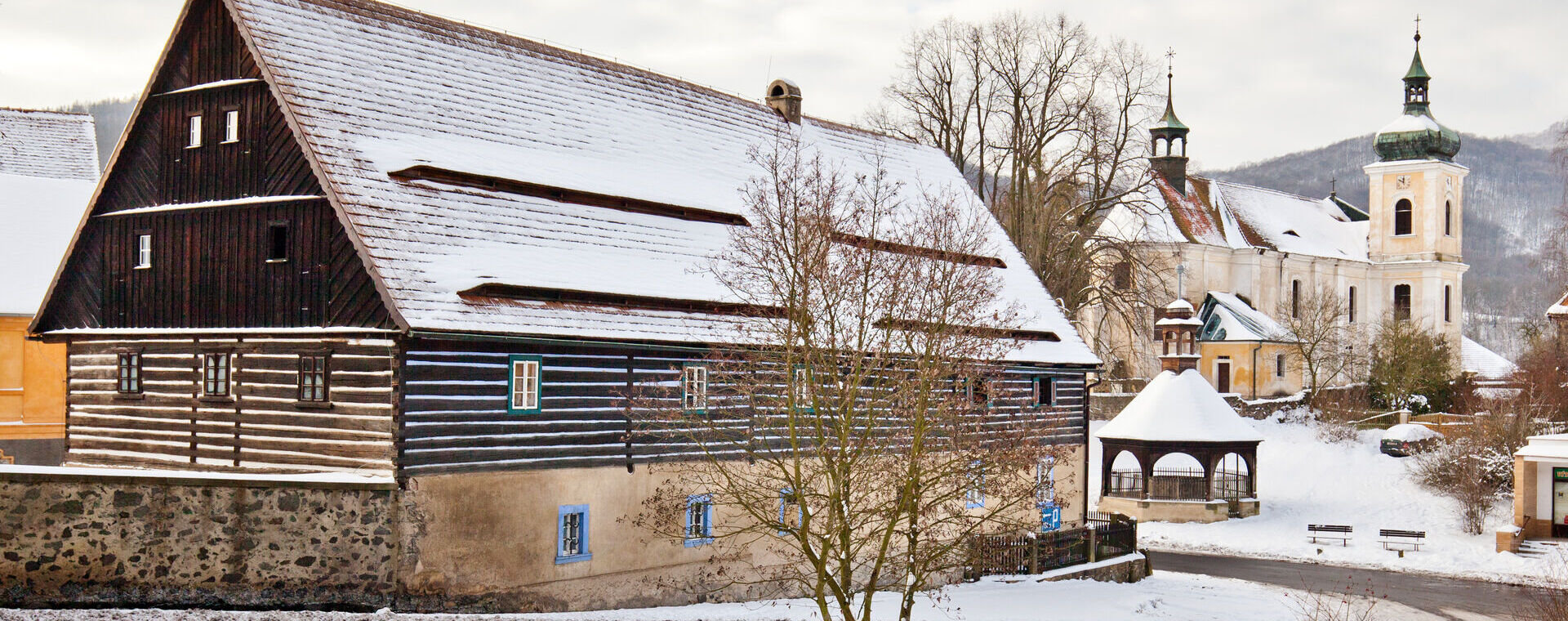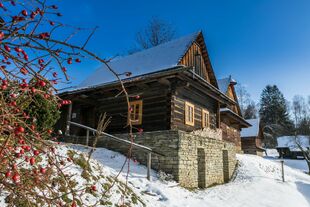The History and Foundation of the Museum
Zubrnice, similarly to a large number of other villages in the German-speaking part of the Czech Lands, was affected by the displacement of the original population after World War II. This meant that relationships to the soil, the landscape and the place that had been built up over the centuries were suddenly interrupted. Fruit orchards and hop gardens slowly disappeared, and the cultural landscape nurtured for generations was gradually degraded. Buildings in the centre of the village that were extremely valuable from today’s perspective were demolished in the nineteen sixties. Even the Church of Saint Mary Magdalene was to be blown up. The destruction of this irreplaceable piece of our cultural heritage was only averted at the last moment.
A turning point came in 1974, when the staff of the Museum of Ústí nad Labem in Trmice found out about the situation facing the church. Not only did they manage to save the church from destruction, but during the repeated trips the staff of the museum made to the village they also managed to save a timbered house (no. 61) from demolition. This house, which forms the core of the museum to this day, was in a derelict condition when ownership was taken over from the state farm. A combination of lucky circumstances (the demolition was delayed when the excavator operator fell ill) allowed František Ledvinka, founder of the museum and its director for many years, to take the building quickly under the protection of the museum by means of tactical diplomacy. It was originally to have served recreational purposes for employees, though the idea of founding a museum of vernacular architecture, whose systematic creation began in 1977, began to grow as the potential of the local buildings was discovered.
At a time at which a large number of historic buildings were destroyed in northern Bohemia as the result of mining and systematic dereliction, protected against even greater ruin only by the holiday cottage phenomenon, this can be considered a well-considered move.
Historic building research subsequently conducted in the village under the leadership of Professor Jiří Škabrada uncovered additional important specific features. Buildings and small ecclesiastic monuments found and saved in the field also began to be brought to Zubrnice, and work began here on their restoration and the endeavour to find a new use for them. František Ledvinka took advantage of his contact with Dr Jiří Langer from the Wallachian Open Air Museum in Rožnov pod Radhoštěm, an ethnologist and leading expert in the conceptual development of open air museums, thereby assuring a direct connection to the elite in the field of vernacular architecture.
At first the work was performed on a self-help basis and by volunteers during the museum’s regular day-to-day operations. Soon, however, conservationists began to show an interest in the renovation work, and craftsmen from the ironworks at the District Monument Administration became involved. It was at that time that the museum obtained and restored a railway building with a view to the operation of a regular train service.
The Hop Farm (building no. 61) was ceremonially opened on 22 September 1988 under the patronage of PhDr. Josef Vařeka, a distinguished expert in folk architecture, as the museum’s first tour route. It remains its principal route to this day. Repairs to the church were completed after the social changes that came in 1989, and the school, the store and (in the following decade) the peasant mill in Týniště were gradually opened to visitors.
The museum entered into active co-operation with the Faculty of the Environment at Jan Evangelista Purkyně University in Ústí nad Labem and with students from what is now the Faculty of Art and Design, who in the middle of the 1990s began to hold Maytime Fairs which became renowned in the region and unique of their kind for many years.
The museum in Zubrnice became independent in 1994 and responsibility for it moved from the local authority first to the National Heritage Institute in Ústí nad Labem and then in 2013 to the Regional Historic Sites Management in Prague. The latest chapter in its history began in December 2018 when it became part of the National Open Air Museum based in Rožnov pod Radhoštěm, where its founder had sought inspiration more than forty years before.
The museum’s most recent large project was cross-border co-operation with a German partner in the Cíl3/Ziel3 programme in the years 2008–2012, which made it possible to reconstruct a building relocated from Loubí with European subsidies to serve as a multi-purpose education centre. It is now the largest fully-furnished building designed for educational programmes at any of the open air museums in this country.












